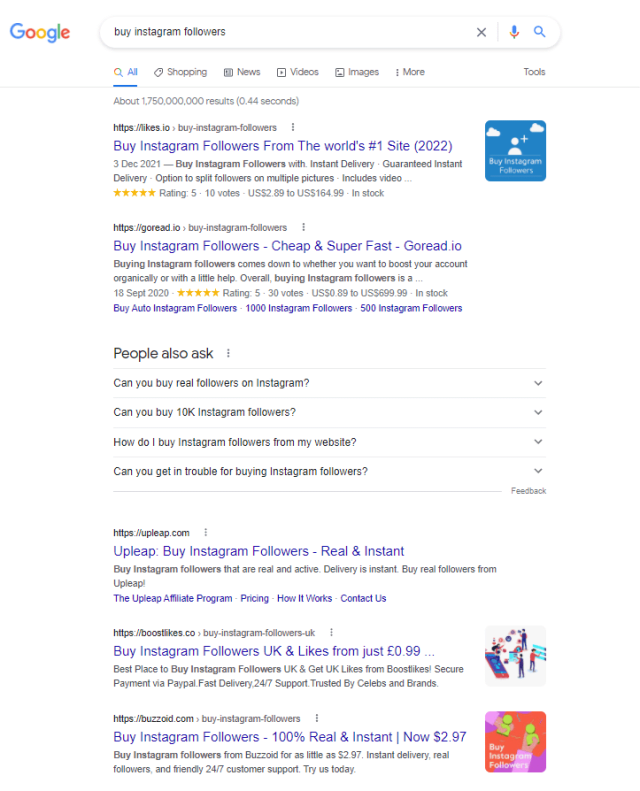
The Impact of Social Media Bots
 Sian Roach, Cybersecurity Content Specialist
Sian Roach, Cybersecurity Content Specialist
9 minutes read
Social media has evolved to become much more than a simple platform to share thoughts and updates with the internet. Platforms such as Facebook, Twitter, and Instagram are frequently used for business, politics, news, and online events, in addition to their original purpose of social sharing. Many people have even built a career using social media and are using their followers to make money by posting reviews or endorsing popular brands, products, restaurants, or experiences; those following such a career path are referred to as ‘influencers’.
Influencer marketing is becoming increasingly popular; it is estimated that for every $1 spent on influencer marketing, companies are making a $5.78 return on investment. The more followers and traffic influencers receive on their platforms, the more valuable they are to the company, resulting in companies making higher payouts per post to influencers with a larger following. As the influencer marketing industry grows, many people are trying to increase their following at rapid rates to get their hands on the bigger deals. Most people attempt to grow their following organically through interacting with posts, updating their followers often, and creating shareable or ‘viral’ content, however this can be time consuming and does not always guarantee results. For this reason, some people will opt for artificial methods to grow their following instead, such as purchasing followers, likes, views, or comments from sockpuppet or bot accounts.
Social media bots: a false following?
While a robot following on social media seems like the plot of a dystopian future novel, it is estimated that 45% of Instagram accounts, 15% of Twitter accounts, and 5% of Facebook accounts are automated, designed to imitate real people. Additionally, it has been suggested that approximately 5-30% of all followers across social media platforms are fake. Many celebrities have been stung by a mass loss of followers in recent years, following attempts to purge all the fake social media accounts plaguing popular platforms. In 2014, Kim Kardashian famously lost over 1.5 million followers overnight, following an attempt by Instagram to eliminate fake accounts run by Instagram bots. At the time of writing, the famous Kardashian currently has 285 million Instagram followers, however it has previously been estimated that 44% of these are fake or bot accounts.
Another celebrity whose Twitter following is plagued by bot accounts is former president of the United States, Donald Trump. Before he was banned from the platform, it was estimated that 61% of Donald Trump’s Twitter following are twitter bots – and it is likely that these bots were prevalent in swaying public opinion during both the 2016 and 2020 presidential elections.
Read more about how political bots had an influence on the US elections in our previous blog “3 times bots have impacted major world events”
Surprisingly, these fake social media interactions are not difficult to purchase. Just a quick Google search for “buy Instagram followers” brings up several websites where you can purchase followers for as little as £0.99.

New technology found in shopping centers in Russia even allows you to purchase fake Instagram followers and likes from a vending machine. It costs approximately $1.75 (or 100 Russian rubles) to purchase 100 followers – and just half that price to purchase 100 likes
It is likely that most of the interactions available to purchase are run by social media bots, however some of the sites advertising ‘real’ followers could be selling followers run by sockpuppet accounts.
Are fake accounts a problem in influencer marketing?
On social media, an influencer’s value to brands is measured in their reach and how much engagement they can generate with their content. In theory this is easily measurable by counting the influencer’s followers and how many likes and comments each of their posts receives. In practice these numbers can lie because a large proportion of social media users are fake, or “bots”.
Where a large segment of an influencer’s engagements come from fake accounts or social media bots, trust is lost between the influencer and their genuine followers (those they hope to “influence” into buying any product they endorse), as well as with the brands paying for this promotional service.
How can social media bots used by influencers be stopped?
The chain of responsibility in influencer scams is so complex that it’s difficult to know who is responsible for breaking it. According to the BLADE Framework®, which describes several bot attack kill chains, it is most effective to disrupt attacks at the earliest stage possible. Therefore, blocking malicious traffic at the account creation pages is the key to preventing social media bots.
What is the difference between social media bots and sockpuppet accounts?
Sockpuppet accounts are defined as false online identities, usually created with the intention to deceive – they are often controlled by one person pretending to be several others. In contrast, social media bots are accounts controlled by automated programs, and not run by real people. There are several uses for both types of fake social media accounts, including:
- Business promotion
- Generating reviews
- To spread content with a particular political opinion or bias
- Submitting multiple entries to online polls, competitions, or raffles
What impact do inauthentic accounts have?
Influencer fraud
As mentioned previously – social media accounts with higher following are often paid more by companies for advertising their products or services via their social posts. The problem with this however, is if the followers and engagements associated with the account are inauthentic, then companies are being defrauded of potentially thousands of dollars for their product to be advertised to social media bots or sockpuppets rather than genuine customers. It is estimated that approximately 15% of costs spent on influencer marketing is lost to fraudulent social engagements – costing marketers approximately $1.3 billion annually.
Considering how easy it is to acquire a fake following, it is unsurprising that 55% of influencers were involved in some type of marketing fraud or fakery in 2020.
Influencing political opinion
It has been confirmed that the use of bots in social media has had an influence on political events for over a decade. Although Twitter bots seemed to have the most influence during the above political campaigns, Facebook and Instagram bots were also found to be spreading misinformation on social media platforms during this time.
3 times bots impacted political events
- In 2011, social media bots heavily influenced the Arab Spring, a series of events that led to political upheaval in several Arabic countries. While social media platforms Facebook and Twitter were initially used to organise protests and spread awareness, they soon became rife with misinformation and hate speech. Almost a decade later, these platforms announced they had removed thousands of bots that had been spreading misinformation and state-backed manipulation during these events. It is still debated whether these bots contributed to the death toll during the Arab Spring and whether stricter regulations may have saved lives.
- It is believed that many of the accounts which took part in conversations surrounding the 2016 Brexit referendum were not human users but bot accounts created to engage in debates. An analysis of social media following the referendum found several inauthentic pro-Brexit accounts driven by bot activity, including a network of 13,493 accounts vocalising support for the ‘Vote Leave’ campaign via Twitter. Many commentators wonder whether the artificial increase in pro-Brexit propaganda generated by bots could have swayed the result of the referendum, with the ‘Vote Leave’ campaign ultimately winning by a margin of just 1.89%.
- Perhaps the most infamous cases of politically motivated bot farming occurred during the 2016 and 2020 American presidential elections. Social media platforms reported several instances of bots posting political agendas and spreading misinformation to journalists, with one bot farm being used to create and manage 13,755 social media accounts, even posting over 206,625 posts within a single month.
Without considering the ethical implications of using bots to spread misinformation and sway public opinion – using bots on social media in this way is having a negative impact on the way people engage with politics. People are becoming more frustrated with political discussions, and the inability to distinguish between fact and misinformation is creating an unstable foundation for political debates.
How to spot ‘influencer’ accounts with fake followers and social media bots
| Fraudulent ‘influencer’ account red flags | Bot or sockpuppet account red flags |
| Accounts with a large following, but little engagement with posts | Accounts with no profile pictures, or generic profile pictures (such as images of landscapes or animals) |
| High follower count with little content history | Posts with spam or unoriginal content |
| Followers increase in sharp increments, rather than gradually | Use of hashtags that are not necessarily related to the context of the post |
| Most followers have blank/minimal profiles with little content shared | Content that is aggressive or misleading. E.g. use of statistics where a source is unknown or undetectable |
Many social media platforms are taking a positive step forward to removing fake accounts from their platforms; between July and September 2021, Facebook removed approximately 1.8 billion fake accounts. Using the above criteria alone, however, to indicate fraudulent influencer accounts, or bot accounts may not be as effective as you might think.
It is worthy to note that recent technological advancements in artificial intelligence have revolutionized the use of bots in social media. Social media bots have evolved in recent years to become much more human-like. Some bots are even sophisticated enough to engage in debate with genuine humans. For this reason, it is not always easy to spot bot accounts or fraudulent influencer accounts, which highlights the importance for social media platforms to remain vigilant and invest in specialist technology to continue to differentiate between bot and human traffic.
Subscribe and stay updated
Insightful articles, data-driven research, and more cyber security focussed content to your inbox every week.
By registering, you confirm that you agree to Netacea's privacy policy.